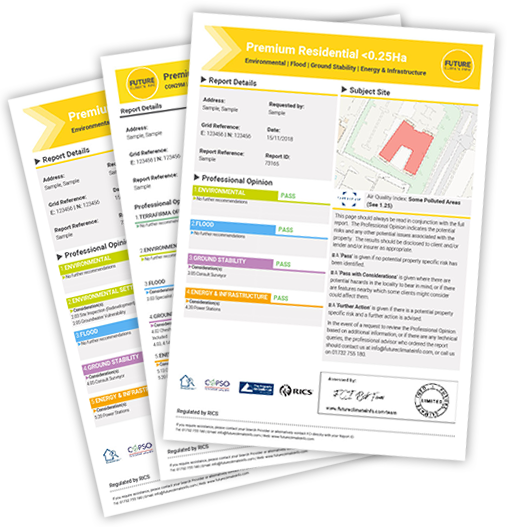
Subsiding in the Heat
Driven by the hot temperatures of this exceptional summer, soil moisture measures are at the equivalent of the subsidence claim surges of 2003 and 2006. With the weather showing little sign of change, will the scourge of subsidence become the hallmark of 2018 for property owners?
MORECS is the Met Office’s Evaporation and soil moisture deficit for the UK calculated using weather observations. It is averaged over 40 x 40 km nationwide grid and at the end of July was close to its highest “Red” level of alert. The heatwave of June and July has delivered the driest conditions since the infamous summer of 1976. Clay soils of the South East of England are being significantly affected and there is a strong potential for a surge in insurance claims.
What is Subsidence?
Subsidence is the downward movement of a building caused by loss of support in the ground below the foundations, which is not solely due to the weight of the building on the ground. The most common cause is clay soil shrinkage, which can be made worse by the presence of large trees and shrubs close to a building. A differential downward movement of the foundations occur, with the resulting cracking to walls and ceilings.
This movement can equally occur when the clay swells through high rainfall and water tables. The British Geological Survey estimates that 1 in 5 homes in the UK are at risk of shrink/swell subsidence.
Historically, we have “enjoyed” a series of invariably damp summers and autumns, with slightly drier winters and springs. However, climate change acceleration in the last 50 years has brought increasingly wetter winters and drier summers. There is some natural recovery, where cracks reclose as clay swells in the winter, but there is a marked trend now for drought events to last longer. The long range climate forecast for the South of England is for longer, hotter, drier summers and so the risk of subsidence is likely to rise in line with this.
Subsidence Factors
The role of trees in subsidence is important. In drought conditions, root systems grow more extensive as they search for water, so more damage could be done to nearby buildings and underground utilities. According to Property Assure, over 60% of all subsidence claims are caused by trees and vegetation.
Tree management is expected to become increasingly more important and positioning of trees will be of greater concern to insurers. In any case, trees close to property should be pruned every two years to contain their spread above and below ground. The last thing Property owners should do though is cut them down, as the loss of the root system could cause even worse heave as the land rises to compensate.
The way we design current surface drainage on new build properties also has an impact on how much surface water gets to the soil. The increase in hard surfaces and channelling of rainwater straight to storm sewers means it does not get a chance to percolate into the local soil. Hopefully, greater mandation of Sustainable Drainage Systems (SuDS) will help address this.
Our industrial legacy and past waste management practices can create some of the most serious impacts on homeowners. If you are unlucky enough for your home to be in proximity to an old landfill site, droughts can lead to even greater movement as the ground is far more loose and friable than a dense band of clay. Cavern roofs of shallow chalk mines, again prevalent in the south, can also sag if the ground dries and shrinks due to the lack of support from below.
More Caught in the Subsidence Claims Trap?
Homeowners who have claimed for subsidence on their insurance have found themselves stuck paying expensive premiums to existing providers because no other insurers will offer them cover.
Even if your property has been underpinned and the subsidence problem resolved, insurers will usually continue to consider it high risk, particularly if repairs were made relatively recently. This is likely to not only mean steeper premiums, but also a hefty excess for future subsidence claims.
The MORECS soil moisture deficit measure looks likely to reach its maximum in August, so does this mean there will be large surge of claims? Well both the 2006 and 2003 surges were triggered by record breaking temperatures in July and August respectively.
St Swithin’s Day (July 15th) was sunny with temperatures of 32C. While this does not mean 40 days without rain (the heatwave did break and is now affecting the South only), at this time of the year summer weather patterns are generally established. European weather patterns suggest the heat is here to stay for some time yet.
The deciding factor for a surge in subsidence claims will be how much longer the heatwave prolongs through August in the key risk areas. The South still looks set for high temperatures and low rainfall.
What is certain is that the ABI are forecasting significantly higher subsidence claim numbers in 2018 than the previous 3 year average of 16,000.
Assess the Lie of the Land
It’s important that homeowners and potential buyers are as informed as possible of the potential risk. For any homeowners concerned about their ground stability risk, a property survey or a comprehensive environmental report will provide an expert view of the risk as well as advise on the next steps to take should further action be required.
Future Climate Info provides comprehensive ground stability risk information to homebuyers. It includes exclusive Property Assure Subsidence risk claims data by postcode and is available in all Premium, Standard and the standalone Ground Stability reports.
Backed by £10 million Professional Indemnity Insurance, it can be relied upon by the professional parties involved in the property transaction, including the first purchasers and their advisers, and the first purchaser’s lender.
For more information, contact us on 01732 755180 or email info@futureclimateinfo.com
Try before you buy
To take advantage of a trial free order of your first environmental report, please complete the enquiry form and we will get back to you as soon as possible. We will need to take more details of the property or site and ask some more questions about your firm and the transaction.

